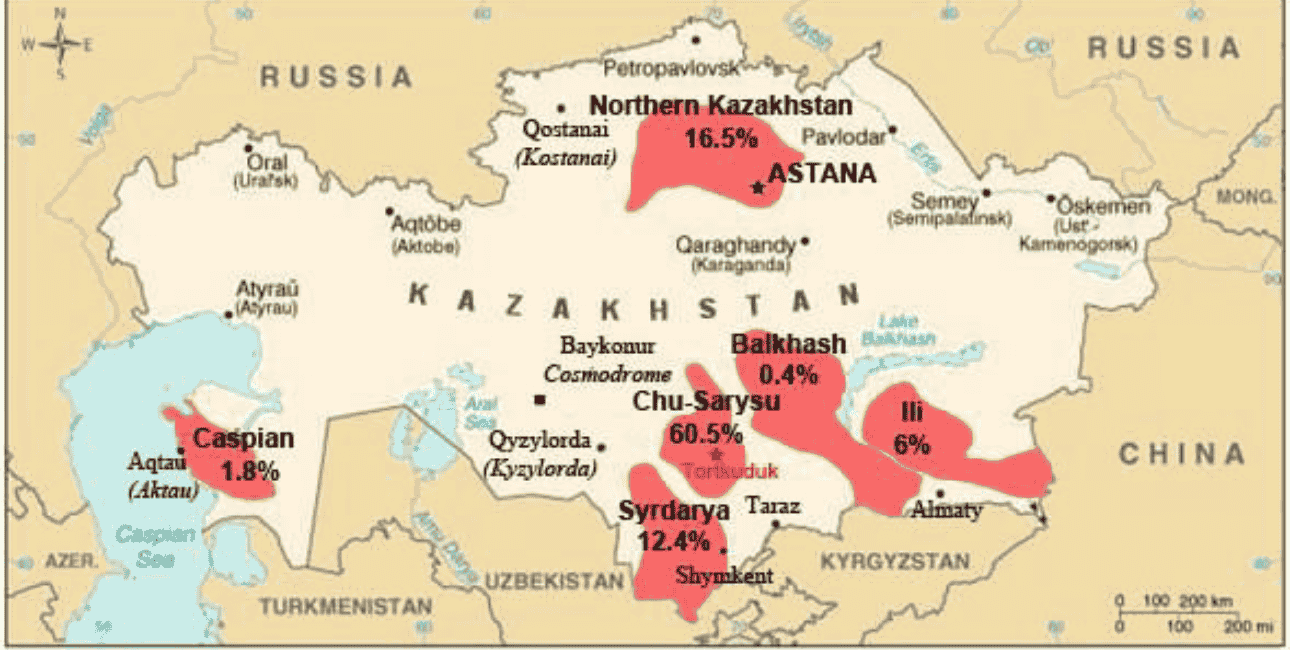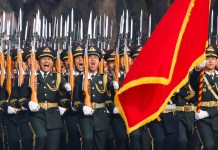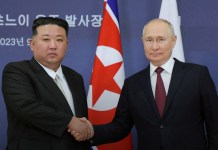In November 2024, the World Nuclear Association reported that Kazakhstan has 12% of the world’s uranium resources. In 2022, Kazakhstan produced 43% of the world’s uranium.
However, Kazakhstan had only one Russia-made nuclear power reactor, which operated from 1972 to 1999, generating electricity and desalinating water. A major plant in Kazakhstan makes nuclear fuel pellets to sell value-added fuel rather than just uranium.
In pursuit of this objective, the country is building a fuel fabrication plant with 49% Chinese equity, the World Nuclear Association reported.
Clearly, Kazakhstan is an important country for uranium production.
Production in 2023 was 21,112 tU, and National Atomic Company Kazatomprom said it expected 2024 production to be 21,000 – 22,500 tU. Of its 13 uranium mining projects, Kazatomprom wholly owns three, and 10 are joint ventures with foreign equity holders.
Electricity Sector
In a government meeting on January 28, President Kassym-Jumart Tokayev said that growing energy shortages and the need for the progress of the country necessitate accelerating the construction of Kazakhstan’s first nuclear power plant (NPP) and creating a broader nuclear cluster, the Astana Times reported.

Kazakhstan has northern and southern electricity grids with links to Russia, Kyrgyzstan, and Uzbekistan. The question of nuclear power in Kazakhstan has been discussed for many years.
A national security strategy was expected to be finalized in 2018. In September 2021, the President of Kazakhstan has said that Kazakhstan needs a nuclear power plant.
The Plan
The January government meeting focused on gradually shifting to a broader nuclear cluster to overcome the growing energy shortages and support the country’s progress.
The President instructed the government to develop long-term plans for the nuclear industry’s advancement and determine the most suitable locations for constructing future NPPs while adopting modern, safe technologies.
The initial nuclear plant is likely to be constructed in the Almaty region, according to a report published by the Kazakh news outlet Vlast.kz, citing Prime Minister Olzhas Bektenov. The President reportedly said, “Our strategic course on achieving carbon neutrality remains unchanged. However, its implementation should be approached more rationally.”
The objective before the government is to achieve complete self-sufficiency in the energy sector and create reserves of 15 – 20%. The President envisages adding at least three gigawatts of energy capacity within two years, nearly 2.5 times higher than in previous years.
The target is that by 2027, the Western Zone’s electrical networks will be strengthened with the Unified Electric Power System and Southern Zone grids.
The idea of utilizing nuclear power sources is not new to the Kazakh government. Kazakhstan has been thinking for a long time about developing its nuclear industry for peaceful purposes.
In 1997, the then Energy Minister Vladimir Shkolnik proposed the construction of a nuclear power plant for the first time, and successive national energy strategies formalized that ambition.
The Hurdles
No doubt Kazakhstan produces nearly 43 percent of the world’s uranium, yet she has been traditionally cautious about opting for nuclear power.
The memory of the Chernobyl disaster has not yet completely faded. Kazakhstan’s Semipalatinsk region endured over 450 nuclear tests that caused innumerable health problems for locals and badly impacted the environment.
Many people are still skeptical about whether the government can guarantee nuclear safety. Corruption, regulatory failures, excessive foreign debts, and lastly, dependence on foreign countries for critical infrastructure are the debilitating elements in the development of the nuclear industry in Kazakhstan.
On October 6, the country held a referendum on the proposition of whether Kazakhstan should or should not build nuclear power plants. The reports are that 70 percent of votes were cast in favor of the motion.
There are two primary hurdles to this objective. The first is that of balancing technical considerations and commercial interests against the delicate geopolitics of supply. It will not be easy for Astana to choose when there are many reactor vendors in countries like Russia, France, China, and South Korea. Financing and localization are crucial parts of the deal.
The opposition in Kazakhstan has been nursing fears that Russia will impose a civil nuclear deal to ensnare Kazakhstan’s energy sector in long-term financial, technological, and supply dependence. The arrest of Mukhtar Dzhakishev, the head of Kazakhstan’s state nuclear company Kazatomprom, in 2009 is a grim reminder of the practical difficulties in achieving this objective.
Financing
Some sections of Kazakh civil society are concerned about the potential involvement of Russia’s Rosatom and its safety standards. However, to imagine that nuclear power development in Kazakhstan is a Russian financial and geopolitical trap is to take only a myopic view of Kazakhstan’s energy needs.
This is not the Kazakhstan of the 1990s. It has more agencies today than at any previous point in negotiations. Carnegie Politika of October 7, 2024, pointed out: “Thanks to French technology transfer and Chinese investment, Kazakhstan is now able to produce fuel assemblies for pressurized water reactors of both French and Chinese designs. In case Kazakhstan opts for one of the two, then the type of supply vulnerability which the European operators of Russian-designed VVER reactors have faced in recent years will be effectively precluded.”
Regarding financial implications, Carnegie Politika asserts that Kazakhstan’s sovereign wealth fund is sufficiently well-endowed to provide 30 percent of a nuclear project’s investment, and foreign loans are increasingly available. Even Western governments have re-embraced a strategic view of civil nuclear exports, offering billions of dollars in loans to sweeten deals.
Concluding Dimensions
This could be the beginning of Kazakhstan’s nuclear industry. The civilian use of nuclear energy is an acceptable theory, but many nuclear states have used it as a mask. The same is true of Iran.
In the case of Kazakhstan, it has to be noted that so far, the entire Central Asian region has been free from nuclear enterprise. Kazakhstan will be the first Central Asian state to embark on a nuclear mission that will impact the entire region.
Both China and Russia have stakes in Central Asia, particularly Kazakhstan. World powers must ensure that the crucial region of Central Asia, considered a bridge between the East and the West and whose rich mineral wealth remains unexplored and unexploited so far, does not become a source of rivalry and contention among the superpowers.
- Prof. KN Pandita (Padma Shri) is the former director of the Center of Central Asian Studies at Kashmir University.
- This article contains the author’s personal views and does not represent EurAsian Times’ policies/views/opinions in any way.
- The author can be reached at knp627 (at) gmail.com




